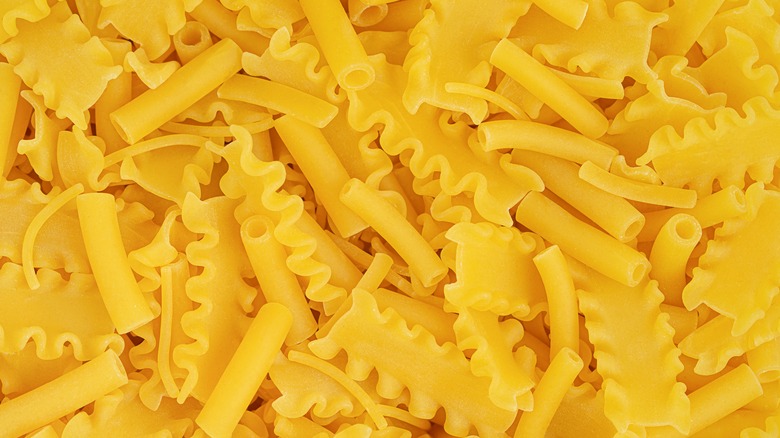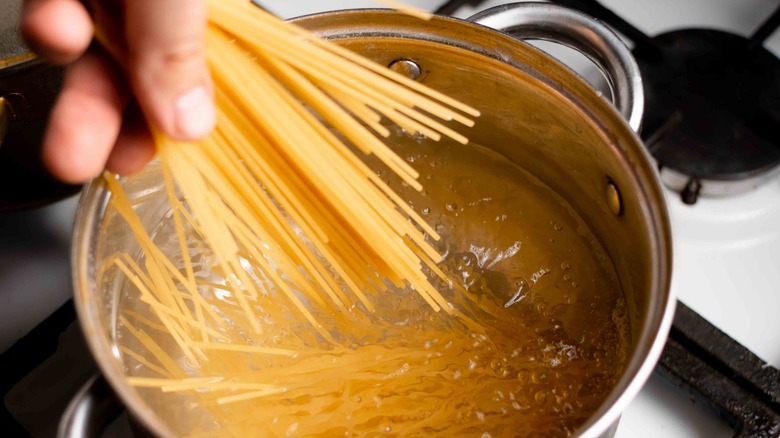Why Ina Garten Uses Multiple Noodle Shapes In Pasta Dishes
We may receive a commission on purchases made from links.
Pasta is always a good idea. Not only is it easy to make, but with so many types of pasta and savory sauces available, you can enjoy the Italian dish in a variety of different ways. From ravioli and lasagna to fettucini and linguine — the pasta-bilities are simply endless. However, the pasta goodness doesn't stop there. According to the queen of the kitchen herself, Ina Garten, you can also mix and match noodle shapes for a delightful contrast in texture.
The Barefoot Contessa shared her pro pasta tip in her 2018 cookbook, "Cook Like a Pro." Although the pairing of pasta sounds like a major no-no — similar to how cutting spaghetti is bad Italian dining etiquette — it's actually more acceptable than you may think.
In fact, Italians even have a term for it, "pasta mista," which translates to "mixed pasta." The concept was born in Naples to keep leftover pasta made in factories from going to waste — and today, packages of assorted pasta shapes can be readily found in stores. But, in addition to buying pasta mista, you can also make use of the partially used boxes of uncooked pasta you already have in your pantry, which is a great way of keeping them from going to waste.
Using different pasta shapes adds texture to the dish
Garten is certainly a fan of pasta mista. In a recipe for baked pasta with tomatoes and eggplant, which can be found in her 2018 cookbook, she shares her affinity for mixing and matching various pasta shapes. Her idea behind the madness? It adds dimension with the contrasting textures, but it also frees up space in her cupboard while preventing waste.
Her delicious-looking recipe calls for penne rigate and fusilli, but you can use whatever leftover pasta shapes you want. However, since different types of pasta can come in varying lengths and thicknesses, a good rule of thumb is to pair shorter-shaped pasta together and, similarly, longer-shaped pasta together. For example, you could add penne to a simple recipe of baked ziti with Italian sausage, or toss some bucatini in with some spaghetti and meatballs. You could even get more adventurous by pairing three or more types of pasta shapes together.
The trick is how you cook them
When it comes to whipping up a delectable bowl of pasta mista, Garten also notes that the order in which you cook your different pasta shapes is important. Her suggestion boils down to common sense: Start boiling the pasta that takes the longest to cook first, and then add the second (or third) pasta after a few minutes. This way, both will turn out perfectly al dente, rather than one overcooked and the other crunchy. Just be sure to make note of the individual cooking times for the pasta before throwing the empty packages in the trash. For instance, if you're mixing rotini with penne, you should start with the latter first because it typically takes longer to cook.
Once it's cooked accordingly, add in the sauce, or use the different types of pasta to add more dimension to a pasta salad or a hearty Italian soup like pasta e fagioli, which actually calls for using mixed pasta shapes. But, no matter which pasta shapes you choose to use, Garten says the pasta should always have a little bite and be al dente. This way, your pasta pairing comes out just right every time.



